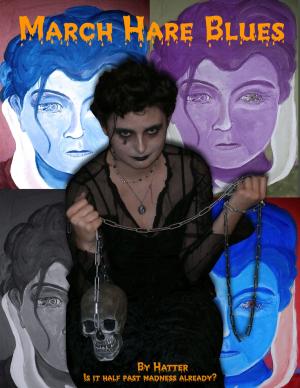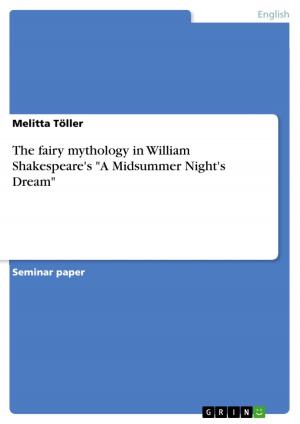Light at Play in Nathaniel Hawthorne's 'The Scarlet Letter'
Nonfiction, Entertainment, Drama, Anthologies| Author: | Michael Helten | ISBN: | 9783638515672 |
| Publisher: | GRIN Publishing | Publication: | July 1, 2006 |
| Imprint: | GRIN Publishing | Language: | English |
| Author: | Michael Helten |
| ISBN: | 9783638515672 |
| Publisher: | GRIN Publishing |
| Publication: | July 1, 2006 |
| Imprint: | GRIN Publishing |
| Language: | English |
Seminar paper from the year 2006 in the subject American Studies - Literature, grade: 1,3, University of Freiburg, course: HS American Classics of the 19th Century, 13 entries in the bibliography, language: English, abstract: When he was engaged to marry Sophia Amelia Peabody, a painter who copied the works of famed contemporaries with 'widespread praise', Nathaniel Hawthorne was awaiting two pictures she had produced 'expressly for him.' (both GOLLIN 2001: 114)1 In a letter he assured her: I never owned a picture in my life; yet pictures have always been among the earthly possessions (and they are spiritual possessions too) which I most coveted. (...) I have often felt as if I could be a painter, only I am sure I could never handle a brush;- now my Dove will show me the images of my inward eye, beautiful and etherealized by her own spirit. (GOLLIN 2001: 115) This essay will first try to outline whether these lines are just flattery or in how far the visual arts really played an important role in Hawthorne's life, and since Hawthorne was of course quite able himself to lay out before the world the images of his inward eye with great success, it will then try to show what visual techniques Hawthorne incorporated in his work, particularly in his classic The Scarlet Letter. It will be seen that, rather than creating a colorful tableau, as Hawthorne was also capable of doing in other tales (GOLLIN 1991: 53)2, he creates an atmosphere in The Scarlet Letter in which 'the color pattern (...) is essentially a contrast of red against black' (MATTHIESSEN 1945: 265)3, while the truly dominant technique Hawthorne puts to use is chiaroscuro, the application of light and shade.
Seminar paper from the year 2006 in the subject American Studies - Literature, grade: 1,3, University of Freiburg, course: HS American Classics of the 19th Century, 13 entries in the bibliography, language: English, abstract: When he was engaged to marry Sophia Amelia Peabody, a painter who copied the works of famed contemporaries with 'widespread praise', Nathaniel Hawthorne was awaiting two pictures she had produced 'expressly for him.' (both GOLLIN 2001: 114)1 In a letter he assured her: I never owned a picture in my life; yet pictures have always been among the earthly possessions (and they are spiritual possessions too) which I most coveted. (...) I have often felt as if I could be a painter, only I am sure I could never handle a brush;- now my Dove will show me the images of my inward eye, beautiful and etherealized by her own spirit. (GOLLIN 2001: 115) This essay will first try to outline whether these lines are just flattery or in how far the visual arts really played an important role in Hawthorne's life, and since Hawthorne was of course quite able himself to lay out before the world the images of his inward eye with great success, it will then try to show what visual techniques Hawthorne incorporated in his work, particularly in his classic The Scarlet Letter. It will be seen that, rather than creating a colorful tableau, as Hawthorne was also capable of doing in other tales (GOLLIN 1991: 53)2, he creates an atmosphere in The Scarlet Letter in which 'the color pattern (...) is essentially a contrast of red against black' (MATTHIESSEN 1945: 265)3, while the truly dominant technique Hawthorne puts to use is chiaroscuro, the application of light and shade.















